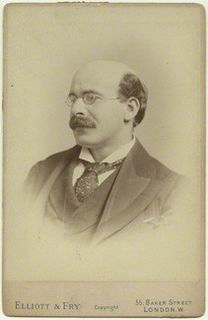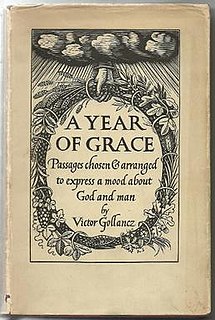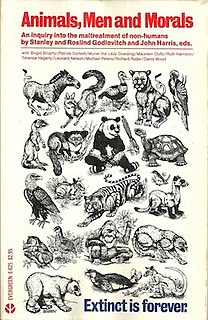
Existentialism ( or ) is a form of philosophical inquiry that explores the problem of human existence and centers on the lived experience of the thinking, feeling, acting individual. In the view of the existentialist, the individual's starting point has been called "the existential angst," a sense of dread, disorientation, confusion, or anxiety in the face of an apparently meaningless or absurd world. Existentialist thinkers frequently explore issues related to the meaning, purpose, and value of human existence.

Hermann Karl Hesse was a German-Swiss poet, novelist, and painter. His best-known works include Demian, Steppenwolf, Siddhartha, and The Glass Bead Game, each of which explores an individual's search for authenticity, self-knowledge and spirituality. In 1946, he received the Nobel Prize in Literature.

Søren Aabye Kierkegaard was a Danish philosopher, theologian, poet, social critic, and religious author who is widely considered to be the first existentialist philosopher. He wrote critical texts on organized religion, Christendom, morality, ethics, psychology, and the philosophy of religion, displaying a fondness for metaphor, irony, and parables. Much of his philosophical work deals with the issues of how one lives as a "single individual", giving priority to concrete human reality over abstract thinking and highlighting the importance of personal choice and commitment. He was against literary critics who defined idealist intellectuals and philosophers of his time, and thought that Swedenborg, Hegel, Fichte, Schelling, Schlegel, and Hans Christian Andersen were all "understood" far too quickly by "scholars".

L'Étranger is a 1942 novella by French author Albert Camus. Its theme and outlook are often cited as examples of Camus' philosophy, absurdism coupled with existentialism, though Camus personally rejected the latter label.

Christian Otto Josef Wolfgang Morgenstern was a German author and poet from Munich. Morgenstern married Margareta Gosebruch von Liechtenstern on 7 March 1910. He worked for a while as a journalist in Berlin, but spent much of his life traveling through Germany, Switzerland, and Italy, primarily in a vain attempt to recover his health. His travels, though they failed to restore him to health, allowed him to meet many of the foremost literary and philosophical figures of his time in central Europe.

Colin Henry Wilson was an English writer, philosopher and novelist. He also wrote widely on true crime, mysticism and the paranormal, eventually writing more than a hundred books. Wilson called his philosophy "new existentialism" or "phenomenological existentialism", and maintained his life work was "that of a philosopher, and (his) purpose to create a new and optimistic existentialism".

Existentialism Is a Humanism is a 1946 work by the philosopher Jean-Paul Sartre, based on a lecture by the same name he gave at Club Maintenant in Paris, on 29 October 1945. In early translations, Existentialism and Humanism was the title used in the United Kingdom; the work was originally published in the United States as Existentialism, and a later translation employs the original title. The work, once influential and a popular starting-point in discussions of Existentialist thought, has been widely criticized by philosophers, including Sartre himself, who later rejected some of the views he expressed in it.

Siddhartha is a 1922 novel by Hermann Hesse that deals with the spiritual journey of self-discovery of a man named Siddhartha during the time of the Gautam Buddha. The book, Hesse's ninth novel, was written in German, in a simple, lyrical style. It was published in the U.S. in 1951 and became influential during the 1960s. Hesse dedicated the first part of it to Romain Rolland and the second part to Wilhelm Gundert, his cousin.
Victor Gollancz Ltd was a major British book publishing house of the twentieth century and continues to publish science fiction and fantasy titles as an imprint of Orion Publishing Group. It was founded in 1927 by Victor Gollancz and specialised in the publication of high-quality literature, nonfiction and popular fiction, including crime, detective, mystery, thriller and science fiction. Upon Gollancz's death in 1967, ownership passed to his daughter, Livia, who sold it to Houghton Mifflin in 1989. Three years later in October 1992, Houghton Mifflin sold Gollancz to the publishing house Cassell & Co. Cassell and its parent company Orion Publishing Group were acquired by Hachette in 1996, and in December 1998 the merged Orion/Cassell group turned Gollancz into its science fiction/fantasy imprint.

My Belief: Essays on Life and Art is a collection of essays by Hermann Hesse. The essays, written between 1904 and 1961, were originally published in German, either individually or in various collections between 1951 and 1973. This collection in English was first published in 1974, edited by Theodore Ziolkowski.

Sir Israel Gollancz, FBA was a scholar of early English literature and of Shakespeare. He was Professor of English Language and Literature at King's College, London, from 1903 to 1930.

Philosophical Fragments is a Christian philosophical work written by Danish philosopher Søren Kierkegaard in 1844. It was the second of three works written under the pseudonym Johannes Climacus; the other two were De omnibus dubitandum est in 1841 and Concluding Unscientific Postscript to Philosophical Fragments in 1846.

Gary Joseph Lachman, also known as Gary Valentine, is an American writer and musician. He came to prominence in the mid-1970s as the bass guitarist for rock band Blondie. Since the 1990s, Lachman has written full-time, often about mysticism and occultism.

Hell is Henri Barbusse's second novel, written in 1908, in which the unnamed narrator spies on his fellow house guests through a peephole in his wall.
Dagobert David Runes was a philosopher and author.
Stuart Holroyd is a British writer.

Sartre's Sink is a literary pastiche in the form of a do it yourself handbook. It contains advice about how to undertake 14 common household tasks each written in the style of a famous author from history. Sartre's Sink is the second book by photographer and author Mark Crick. Excerpts have appeared in The Independent and the Evening Herald.

A Year of Grace is a 1950 anthology compiled by Victor Gollancz, consisting of passages concerning religious and spiritual life, taken from a variety of different sources.

Animals, Men and Morals: An Inquiry into the Maltreatment of Non-humans (1971) is a collection of essays on animal rights, edited by Oxford philosophers Stanley and Roslind Godlovitch, both from Canada, and John Harris from the UK. The editors were members of the Oxford Group, a group of postgraduate philosophy students and others based at the University of Oxford from 1968, who began raising the idea of animal rights in seminars and campaigning locally against factory farming and otter hunting.
This is a bibliography of works by Colin Wilson.
















